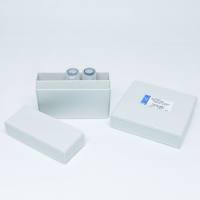Perforated Patch-Clamp Techniques
互联网
962
The patch-clamp technique, introduced by Erwin Neher and Bert Sakmann (Neher and Sakmann, 1976
) in the mid-1970s facilitated recordings of currents through single-ion channels in living cells, advancing the ability to
study the membrane function of excitable cells, such as neurons. Ionic currents through single membrane channels were recorded
after sealing a micropipette tip onto a clean membrane patch. In the early 1980s, the technique evolved to allow recording
of currents conveyed through membrane ionic channels in the whole cell: tight seals with high resistance in the GΩrange (gigaseals)
were possible after drawing up a small patch of the membrane into the pipette tip by suction generated by application of gentle
negative pressure (Hamill et al., 1981
). Subsequent rupture of the patch with negative pressure or a voltage pulse allowed establishment of low-resistance electrical
and physical access to the interior of the cell, thus allowing the recording of the entire population of ionic currents on
the cellular membrane. This constitutes the basis of the whole-cell patch-clamp technique.






